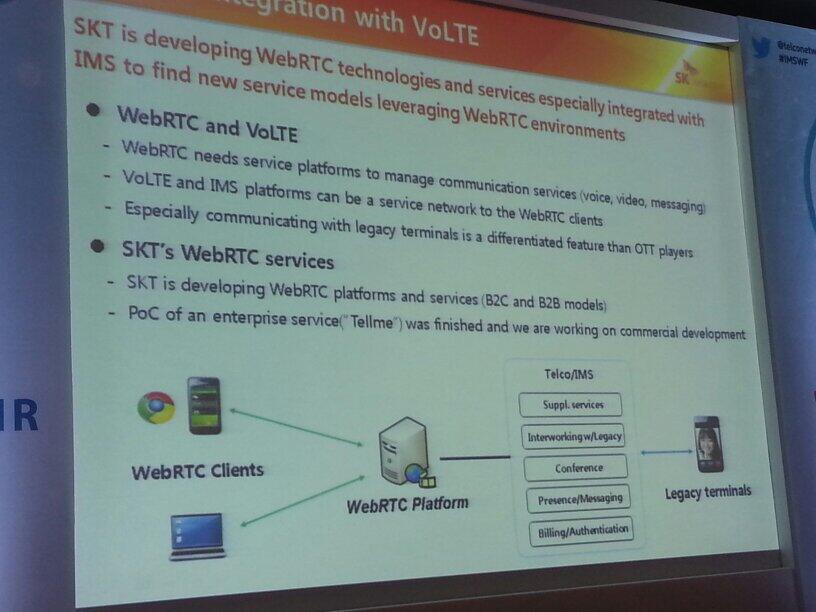Its been a while since I last blogged about WebRTC. Things have been progressing as rather fast pace in this area.

WebRTC capabilities have quietly sneaked in our browsers. There is a debate about who would move to WebRTC before, Apple or Microssoft; Tsahi Levent-Levi makes his predictions here.

As per Light Reading, Japanese operator NTT has opened a WebRTC based chatroom recently.

The Korean operator SK Telecom as been showing off its WebRTC interworking with IMS platform.

The problem with WebRTC can be as seen in the slide above. Classic problem of what was promised and whats the reality.
There are 2 interesting presentations that I am embedding below that I found useful:
Additional Reading:
WebRTC capabilities have quietly sneaked in our browsers. There is a debate about who would move to WebRTC before, Apple or Microssoft; Tsahi Levent-Levi makes his predictions here.
As per Light Reading, Japanese operator NTT has opened a WebRTC based chatroom recently.

The Korean operator SK Telecom as been showing off its WebRTC interworking with IMS platform.

The problem with WebRTC can be as seen in the slide above. Classic problem of what was promised and whats the reality.
There are 2 interesting presentations that I am embedding below that I found useful:
Additional Reading:
- Alan Quayle: IMS and WebRTC Workshop
- Disruptive Analysis WebRTC Market Status & Forecast Update - March 2014
- Snapchat made a secret acquisition to power its new video chat - Verge


4 comments:
Thanks Zahid.
Couple of quick comments:
- I don't think the SKT slide has anything to do with WebRTC specifically
- Opera supports various aspects of WebRTC now
- Most mobile WebRTC is outside the browser, in-app via 3rd-party APIs (note Snapchat's acquisition of AddLive the other day)
- Various plug-ins for IE & Safari to allow them to support WebRTC without official work from MS or Apple
Cheers
Dean
Thanks Dean, just added the link of Snapchat's acquisition to the post.
The modern browsers will pave the way for great web and mobile functionality. Legacy browsers, security concerns and IMS should already be addressed in corporate environments.
soft switch - IMS - VoIP and nowadays WebRTC is the most significant technology which will survive network and PSTN operator from high cost traditional cooper network .
most of operator recently immigrates to IMS and voip but the main issue which has been remained is transmission . I believe that radio transmission is the finaly solution about transmission : such as : WiFi - VoWLAN - CDMA - Wimax
Post a Comment